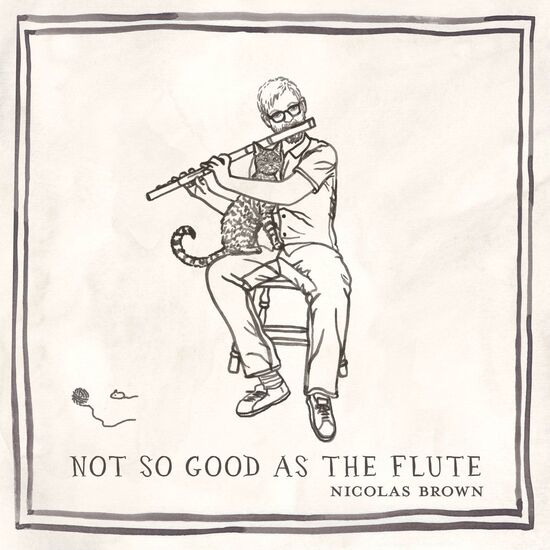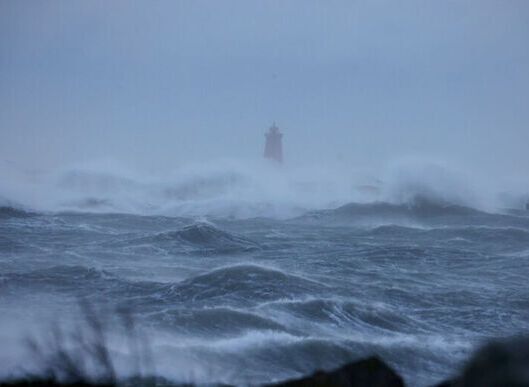Not jpg
By Ray O’Hanlon
rohanlon@irishecho.com
Is “No Irish Need Apply” historical fact or myth?
There is an argument, but we’re backing Rebecca.
The Daily Beast reported recently that the Internet had been buzzing about how discrimination against the Irish was a myth.
“All it took was a high schooler to prove them wrong,” the DB reported.
The report stated; “Rebecca Fried had no intention of preserving the record of a persecuted people whose strife was ready to be permanently written off in the eyes of history as exaggerated, imagined, or even invented. That's because Rebecca was too busy trying to get through the 8th grade.”
Rebecca’s work focused on a 2002 paper by University of Illinois-Chicago history professor, Richard J. Jensen.
It was entitled “No Irish Need Apply: A Myth of Victimization.”
Wrote Jensen at the time: “Irish Catholics in America have a vibrant memory of humiliating job discrimination, which featured omnipresent signs proclaiming ‘Help Wanted—No Irish Need Apply!’ No one has ever seen one of these NINA signs because they were extremely rare or nonexistent.”
According to The Daily Beast report, Jensen’s view picked up traction over the last decade, but seemed to reach an unexpected fever pitch in the last few months.
Rebecca set about tamping down the fever.
According to DB, Rebecca never set out to prove the Jensen thesis wrong. She was just interested in an article her dad, Michael, brought home from work one day.
“Just for the fun of it, I started to run a few quick searches on an online newspaper database that I found on Google,” said Rebecca.
“I was really surprised when I started finding examples of NINA ads in old 19th-century newspapers pretty quickly.”
Rebecca’s curiosity was piqued. The more she dug, the more she dug up that pointed to the grim reality of the “No Irish Need Apply” phenomenon in the 19th century and into the 20th.
“I showed my dad right away when I started finding these NINA ads. We just didn’t know whether this was already widely known and, if it wasn’t, whether it would be viewed as a topic worth considering for publication,” Rebecca said.
She was about to be encouraged in the matter of publishing.
Enter Kerby Miller, recently retired professor of history at the University of Missouri.
“He’s written everything from Guggenheim-funded books about the 18th-century Irish to the PBS documentary Out of Ireland with Paul Wagner. In 1986, he was nominated for a Pulitzer Prize for history,” the DB report stated.
Miller is also well known in Irish America as something of an academic dean when it comes to the history of Irish immigration.
Miller had been an early critic of the Jensen position, one he viewed as being revisionist.
“From the first, my responses to Jensen’s claims had been strongly negative, as were those of a few other scholars, but, for various reasons, most historians, social scientists, journalists, et cetera accepted or even embraced Jensen’s arguments,” he told The Daily Beast.
Miller had been trying to “bat down” the conclusions in Jensen’s paper for 13 years.
He told DB that he knew something was fishy from the outset. First of all, he had seen the (NINA) advertisements years ago - well before something like Google Scholar made them easy to search for - as a graduate student at UC Berkeley in the 1970s. But something else tipped him off.
“Even more suspicious is that it seemed to fit into a political or ideological framework, in addition to his own writing, which was obviously polemically bent,” he said referring to Jensen who paper ended thus: “Some Americans feared the Irish because of their religion, their use of violence, and their threat to democratic elections. By the Civil War these fears had subsided and there were no efforts to exclude Irish immigrants. The Irish worked in gangs in job sites they could control by force. The NINA slogan told them they had to stick together against the Protestant Enemy, in terms of jobs and politics. The NINA myth justified physical assaults, and persisted because it aided ethnic solidarity. After 1940 the solidarity faded away, yet NINA remained as a powerful memory.”
Miller said he wrote to Jensen at one point to contest his stance.
“Jensen’s email response to my criticisms was that they were to be expected because I was an Irish-American and a Catholic,” says Miller.
“In fact, as I responded to him, I am neither.”
Miller, according to DB, said he realized it might be an unwinnable fight when he went to New Zealand to present some work and was “bombarded” with questions as to why he didn’t believe Jensen.
“I hadn’t realized how extraordinarily dominant Jensen’s argument had become. I don’t know if that says something about the hierarchy of power in academia, or the others who accepted it because they bought into this revisionist interpretation.”
Miller could name other scholars who questioned Jensen’s motives. He even tried to talk some of them into writing about it.
“They knew from their own research, or strongly suspected, that Jensen’s arguments were wrong or fallacious. They were just too busy (to refute it) or preferred not to.”
Rebecca was busy. But not too busy.
“We didn’t know who to contact, but we saw that Professor Jensen’s article cited Professor Miller as someone who had erroneously believed in NINA, so we thought he might be a good person to try,” She told DB
“And he was obviously an expert in this area.”
“They contacted me on the first of May. All I did was fill them in on the story,” Miller told the Irish Echo while referring to the Frieds.
As it turned out, the story from Miller’s perspective would dovetail with Rebecca’s.
Continued the DB report: Miller opened up Rebecca’s thesis. He quickly realized all of the academics too busy to take on Jensen couldn’t have done it better than a 14-year-old.
Rebecca said that Miller then helped her and her father walk through what a scholarly article should look like.
And so it transpired that on July 4, when the very best of America is celebrated, Rebecca Fried presented to the world, and the Oxford Journal of Social History: “No Irish Need Deny: Evidence for the Historicity of NINA Restrictions in Advertisements and Signs.”
The Journal was the same publication where Jensen’s position was first revealed to the word.
“The article concludes that Jensen’s thesis about the highly limited extent of NINA postings requires revision, and that the earlier view of historians generally accepting the widespread reality of the NINA phenomenon is better supported by the currently available evidence,” Rebecca wrote in her abstract.
After a report in IrishCentral.com, Jensen congratulated Rebecca for her scholarship in the comments section, but took issue with her conclusion.
“I’m the PhD who wrote the original article. I’m delighted a high school student worked so hard and wrote so well. No, she did not claim to find a single window sign anywhere in the USA.”
Not the case, responded Rebecca, who is a student at the Sidwell Friends School in the nation’s capital.
“I do have to say that the article does in fact list a number of posted physical NINA signs, not just newspaper ads. Pages 6-7 catalogue a number of the signs,” she wrote.
Continued the DB report: “Jensen retorted with a numerical list of all of the ‘No Irish Need Apply’ signs he encountered in her essay—ending with, “That’s very rare. In Chicago, only 3 ads in over 50 years. How rare can you get?”
“Then, ever politely, Fried dropped the hammer.”
She wrote Jensen: “Thanks again for the response. This discussion is really fun for me, and I appreciate the opportunity to have it. Let me make one last point and then I promise I will shut up and give you the last word if you want it. You began this conversation by stating that the article ‘did not claim to find a single window sign anywhere in the USA.’ I think we now agree at least that this is not correct.”
She stated that even if it were 15 recorded instances per year or 1,500—the signs existed, the persecution was real, and discrimination of the Irish was not an imagined feeling, but a reality difficult to both express and quantify.
“NINA sign would be just as offensive and memorable to Irish-American and other viewers whether it was for a job, an apartment, a social club, a ‘freedom pole,’ or anything else,” she wrote.
“I’ll conclude by sincerely thanking you again for interacting with me on this. It is a real honor and I appreciate it.”
Later, Rebecca said she regretted how her comments came out, saying she "may have come off as insufficiently respectful."
“He (Jensen) has been doing scholarly work for decades before I was born, and the last thing I want to do was show disrespect for him and his work,”
Kerby Miller wasn’t worried.
“I have the utmost admiration and respect for her. I really just want to be in the background of this. Rebecca is the hero,” he said.
Since Rebecca came out with her paper she has, somewhat ironically, joined Jensen in the Wikipedia “No Irish Need Apply” entry.
The entry reads in part: “Historians have hotly debated the issue of anti-Irish job discrimination in the United States. Some insist that the ‘No Irish need apply’ signs were common, but one scholar, Richard Jensen, argues that anti-Irish job discrimination was not a significant factor in the United States, these signs and print advertisements being most commonly posted by the limited number of early 19th-century English immigrants to the United States who shared the prejudices of their homeland.
“Subsequent research by Rebecca A. Fried, a high school student from Washington D.C. discovered numerous instances of the restriction used in advertisements for many different types of positions, including ‘clerks at stores and hotels, bartenders, farm workers, house painters, hog butchers, coachmen, bookkeepers, blackers, workers at lumber yards, upholsterers, bakers, gilders, tailors, and papier mache workers, among others.’ While the greatest number of NINA instances occurred in the 1840s, Fried found evidence for its continued use throughout the subsequent century, with the most recent dating to 1909 in Butte, Montana.”
Game, set and match to Rebecca.
Of course, and despite Rebecca’s tussle with Jensen, Irish Americans who take a keen interest in history have never doubted that the phenomenon of “NINA” was all too often a fact of life for their ancestors.
In recent years there has been one particularly striking example pulled from the mists of time – not one to do with signs in store windows, but rather a case in which the weapon employed against the Irish was not just a lead pencil but, in some instance, a lead bullet.
Rebecca, now that she has plunged into the Irish American story, would doubtless be interested in a tragic tale set not all that far from her D.C. home.
That would be the story of Duffy’s Cut.







